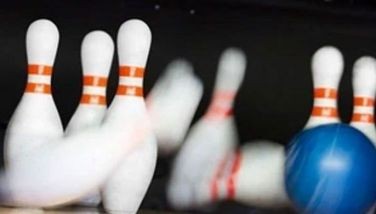Know your sixth sense
One of the most amusing things to watch is a spinning kid who is just about to discover how things will keep moving even when he has stopped spinning. This usually happens before one enters school. Try to remember yourself when you first discovered this “secret” and sharing it with the other kids. After trading quick instructions, you and your playmates all turn into a bunch of weirdoes spinning, stopping, stumbling, giggling until your parents all come out and tell you to stop doing that or you will have the hotdog you just ate, back into the living world. As kids, we all go out of our way to lose this “balance.” We treat our ability to balance as one that came with the goods much like “batteries included.” Then we go enter school and we all learn and celebrate the “famous five” — senses of touch, hearing, sight, smelling and tasting, and for the rest of our lives, most of us do not learn about the sixth sense — the sense of balance.
Yes, the sense of balance is the sixth sense (not the sense that enables one to say “I see dead people”) and the body part responsible for this resides in your inner ear and it is called the vestibular system. I have been looking at the diagram of the inner ear and the vestibular system seemed like a set of a Japanese game show. It has so many “semi-closed canals,” “curtains,” fluids, “balls” and “strings,” to mention only a few. This “set” in your inner ear has three canals specifically designed to detect movements of your head — sideways, up-down, forward-backward. It does this by reconciling the orientation of the “curtains” (membranes) to the whole “set frame” (bony structure of vestibular system) with the movement of the liquid that hits the “strings” (hair cells). These rotations also enable reflexes which turn our eyes in the opposite direction of our heads to keep us on target. The other canals have miniature balls which rise and fall to let you know which way is up (which is also your brain’s way of detecting gravity) and where you are headed. How the whole thing plays out in the canals is passed on to string-like cells, which dutifully transforms them into the electrical pulses that our brain can recognize and act on. And voila, it results in this wonderful pose we describe as “balanced.” So when you spin, you send so many mixed signals and those signals cannot catch up with the rate of your spinning. Thus, when you stop, the whirling party goes on for a little while more.
When I do workshops for science teachers, I often include a portion called “Science News Headlines” where I take the chance to share with teachers some breaking news in the world of science and technology. I remember that about four years ago, I included news about a device called “brainport” accompanied by an image of this woman wearing that very strange helmet that had what seemed like a straw, one end of which went to her mouth. That devise saved her life and her sanity because before she used it, she could not achieve any stability in her poses or movements because an antibiotic she took destroyed her vestibular system. I was pleased to read about her story again more recently in the book called “The Brain that Changes Itself” by Norman Doidge. She was described in the book as a “woman perpetually falling.” Dr. Paul Bach-y-Rita, the scientist who devised brainport passed the signals caused by the movement of the head to pass through the tongue (instead of her damaged vestibular system) and somehow the brain recognized the signals and did its balancing work. Now, Cheryl Schiltz could now balance herself even after being weaned from “brainport.” Her brain relearned how to achieve balance without the signal from the vestibular system.
The April issue of the Scientific American also features another treatment possibility for those whose vestibular systems have been severely damaged. Experts led by Charles C. Della Santina in Johns Hopkins are focused on developing a sort of a gyroscope that could be implanted in these patients. A gyroscope is a cool gadget that spins, that can help you measure orientation. Having something like this inside your ear to replace some of the essential functions of your vestibular system for balance seems to be very promising.
For most people, the multi-sensory experience of the world is largely premised on the sixth sense — that we are in balance — that we do not feel like we live in bottomless, fenceless or roofless spaces. We have taken our everyday pose for granted. So maybe during lunch break, you can ask your friends to go out with you in an open field and celebrate your sixth sense. Once more, go be spinning weirdoes, this time with feelings.
* * *
For comments, e-mail [email protected]
- Latest






























